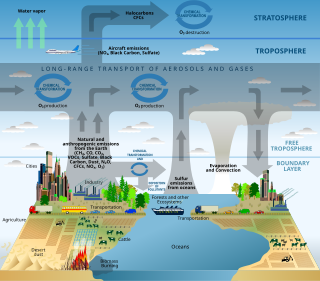
Back Model Afrikaans نمذجة علمية Arabic Modelləşdirmə Azerbaijani Мадэляванне Byelorussian Modelització científica Catalan Modellierung German مدلسازی علمی Persian Modélisation French Modelización Galician वैज्ञानिक प्रतिरूपण Hindi

| Part of a series on |
| Research |
|---|
 |
| Philosophy portal |
Scientific modelling is an activity that produces models representing empirical objects, phenomena, and physical processes, to make a particular part or feature of the world easier to understand, define, quantify, visualize, or simulate. It requires selecting and identifying relevant aspects of a situation in the real world and then developing a model to replicate a system with those features. Different types of models may be used for different purposes, such as conceptual models to better understand, operational models to operationalize, mathematical models to quantify, computational models to simulate, and graphical models to visualize the subject.
Modelling is an essential and inseparable part of many scientific disciplines, each of which has its own ideas about specific types of modelling.[1][2] The following was said by John von Neumann.[3]
... the sciences do not try to explain, they hardly even try to interpret, they mainly make models. By a model is meant a mathematical construct which, with the addition of certain verbal interpretations, describes observed phenomena. The justification of such a mathematical construct is solely and precisely that it is expected to work—that is, correctly to describe phenomena from a reasonably wide area.
There is also an increasing attention to scientific modelling[4] in fields such as science education,[5] philosophy of science, systems theory, and knowledge visualization. There is a growing collection of methods, techniques and meta-theory about all kinds of specialized scientific modelling.
- ^ Cartwright, Nancy. 1983. How the Laws of Physics Lie. Oxford University Press
- ^ Hacking, Ian. 1983. Representing and Intervening. Introductory Topics in the Philosophy of Natural Science. Cambridge University Press
- ^ von Neumann, J. (1995), "Method in the physical sciences", in Bródy F., Vámos, T. (editors), The Neumann Compendium, World Scientific, p. 628; previously published in The Unity of Knowledge, edited by L. Leary (1955), pp. 157-164, and also in John von Neumann Collected Works, edited by A. Taub, Volume VI, pp. 491-498.
- ^ Frigg and Hartmann (2009) state: "Philosophers are acknowledging the importance of models with increasing attention and are probing the assorted roles that models play in scientific practice". Source: Frigg, Roman and Hartmann, Stephan, "Models in Science", The Stanford Encyclopedia of Philosophy (Summer 2009 Edition), Edward N. Zalta (ed.), (source)
- ^ Namdar, Bahadir; Shen, Ji (2015-02-18). "Modelling-Oriented Assessment in K-12 Science Education: A synthesis of research from 1980 to 2013 and new directions". International Journal of Science Education. 37 (7): 993–1023. Bibcode:2015IJSEd..37..993N. doi:10.1080/09500693.2015.1012185. ISSN 0950-0693. S2CID 143865553.
© MMXXIII Rich X Search. We shall prevail. All rights reserved. Rich X Search